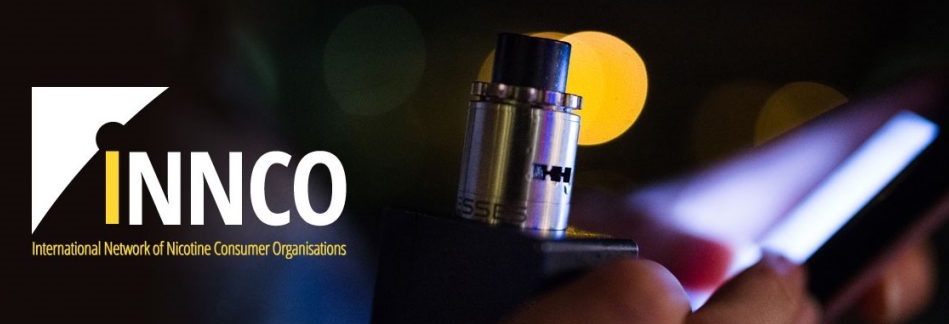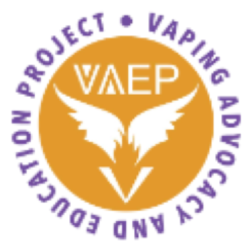Vapers Digest 18th August

Monday’s News at a glance:
Childhood Nicotine Poisoning and Public Policy ~ The State of Academic Research on Nicotine, Part 1 ~ Evidence, not fear, should guide the FDA’s vaping policies ~ The WHO’s Harm-Reduction Blind Spot — And How Australia’s Vape Prohibition Propped Up the Cigarette ~ More of the Same: COP11 Seems Headed to the Usual Closed Vault of Secrets and Silenced Voices ~ Illinois now taxing Zyn and nicotine pouches ~ Ban of single-use vapes a failure as makers replaced outlawed devices with lookalike reusables – that get binned anyway ~ California Attorney General Bonta Joins Bipartisan Letter to CDC and HHS Supporting Continuation of National Youth Tobacco Survey That Assesses Smoking and Vaping Among Middle and High School Students ~ Online vape sales in Malaysia thrive despite ban ~ BANNED IN INDIA | Vape Prohibition and the Fight for Harm Reduction
Childhood Nicotine Poisoning and Public Policy
David Ozgo, The American Spectator
A recent piece published in Pediatrics, titled “Nicotine Ingestions Among Young Children: 2010–2023,” has received significant media attention. The study reports that between 2010 and 2023, 134,663 children under the age of six ingested nicotine. Tragically, two children died as a result.
The deaths of two children from nicotine poisoning — like the death of any child — are tragedies. That these deaths were likely accidental is of no comfort to the grieving parents. One can only imagine the lifelong guilt they will carry. And we can reasonably assume the other 134,661 ingestions were also accidental. No parent is perfect. Even the most vigilant among us has at some point held a hand in front of a toddler’s mouth and pleaded, “Spit it out!”

The State of Academic Research on Nicotine, Part 1
Arielle Selya PhD, Selya Behavioral Science Substack
Those of you who are well-versed in THR might want to skim or skip this section. But for my readers who are new to this area, I should cover the basics.
Research on nicotine/tobacco spans a wide range of disciplines, from chemistry and toxicology (to detect harmful exposures) to research on cells/living tissues and animals, to surveys of people, to randomized controlled trials, to population-level modeling. (My expertise is on the human- and population-level end).
Evidence, not fear, should guide the FDA’s vaping policies
Layal Bou Harfouch, Reason Foundation
In a recent appearance on Politico’s The Conversation podcast, Food and Drug Administration (FDA) Commissioner Marty Makary stressed the importance of building stakeholder consensus and incorporating broad input on policy issues, while grounding decisions in evidence. Yet, in the same discussion, he described a “child vaping epidemic” and signaled plans for increased supply controls.
The latest National Youth Tobacco Survey found that 5.9 percent of middle and high school students were using e-cigarettes in 2024, down from 7.7 percent in 2023 and the lowest level of youth use recorded in a decade, and nothing close to what could reasonably be described as an epidemic.
Alan Gor, Australia Let’s Improve Vaping Education (A.L.I.V.E.)
Australia has become a live case study of what happens when governments follow the World Health Organisation’s abstinence-first playbook on nicotine: you get headlines, raids and seizures, and you accidentally protect the cigarette.
WHO sets the tone: “not risk-free,” therefore restricts or bans
The WHO’s public line on vaping has stayed essentially precautionary: warn about youth uptake, stress that products are “not risk-free,” push flavour bans, and advise countries that already restrict sales to keep tightening the screws. None of this distinguishes clearly between the catastrophic risk of smoked tobacco and the much lower risk of smoke-free nicotine.
More of the Same: COP11 Seems Headed to the Usual Closed Vault of Secrets and Silenced Voices
Diane Caruana, Vaping Post
With just 100 days remaining before the World Health Organization’s (WHO) next global tobacco control summit, concerns are mounting that COP11 will once again sideline science, shut out key voices, and push an abstinence-only agenda that ignores the realities of smoking cessation. For those committed to harm reduction, the draft agenda reads less like a roadmap for public health progress and more like a carefully scripted effort to close ranks, control the narrative, and keep the most relevant stakeholders out of the room.
Illinois now taxing Zyn and nicotine pouches
Carrie Shepherd, Axios Chicago
Illinois just raised the tax on tobacco, which includes a slew of products beyond cigarettes.
Why it matters: Where the Marlboro Man or Joe Camel used to line the windows of convenience stores and gas stations, ads for Zyn nicotine pouches have taken over, appealing to young people with flavored products.
Driving the news: Illinois’ 2026 budget increased the tobacco tax from 36% to 45%, and for the first time includes Zyn and other nicotine products on the list of products.
Ban of single-use vapes a failure as makers replaced outlawed devices with lookalike reusables – that get binned anyway
Tom Kelley, Daily Mail
The ban on disposable vapes has been a flop because makers replace outlawed devices with reusable lookalikes that most users still bin, figures show.
Sales of single-use vapes were banned on June 1 after their sweet flavours and bright packaging were blamed for fuelling a boom in underage vapers and piles of discarded vapes.
But brands have responded with copycat reusable vapes with near identical names, flavours, designs and prices.
California Attorney General Bonta Joins Bipartisan Letter to CDC and HHS
Supporting Continuation of National Youth Tobacco Survey That Assesses Smoking and Vaping Among Middle and High School Students
Sierra Sun Times
On Friday, California Attorney General Rob Bonta joined a bipartisan coalition of 22 attorneys general in submitting a comment letter to the Centers for Disease Control and Prevention (CDC) and the U.S. Department of Health and Human Services (HHS) supporting continuation of the National Youth Tobacco Survey (NYTS). The NYTS is an annual study that assesses smoking and vaping among middle and high school students. The survey provides valuable insight into youth tobacco use and emerging nicotine products and has shaped efforts led by state attorneys general to curb youth tobacco use for over two decades. NYTS data was the first national indicator of the youth e-cigarette epidemic.
“Tobacco control efforts have long been a bipartisan priority, particularly when those efforts concern our youth, and rightfully so. Unfortunately, the Trump Administration has taken several actions that threaten to undo the progress we have made, such as eliminating the Office on Smoking and Health at the CDC,” said Attorney General Bonta. “I’m proud to join a bipartisan coalition of attorneys general in urging the Trump Administration to protect the National Youth Tobacco Survey. When it comes to informing our work to address youth tobacco use, this survey has been a tremendous asset to us all.”
Online vape sales in Malaysia thrive despite ban
The Straits Times
The law in Malaysia bans the sale of vape-related products online, yet they remain widely available through Internet search engines. Almost a year after the Control of Smoking Products for Public Health Act (Act 852) came into force, effectively banning the sale of vapes and e-liquids, purchasing these items remains just a few clicks away. While these products are no longer found on e-commerce platforms when the term “vape” is searched, keying in the name of specific brands reveals that these items are still being sold.
BANNED IN INDIA | Vape Prohibition and the Fight for Harm Reduction
Global Forum on Nicotine
In India, hundreds of millions of tobacco users are kept in the dark about safer nicotine products, while the government bans popular alternatives like vaping and stays silent on even basic NRTs. Shot on location at GFN 2025 in Warsaw, Poland, Jagannath Sarangapani exposes how prohibition and the absence of relative risk messaging have shaped the country’s tobacco control strategy.
A look back at how things have moved on or otherwise…
Vapegoating e-cigarettes
Christopher Snowdon
A study published last year found that if you lie to people on Twitter, some of them will believe you. The researchers showed 2,400 smokers some tweets about vaping, most of which were categorically untrue, and found that those who were exposed to misinformation were more likely to have a poorer understanding of the risks of e-cigarettes than those who were exposed to accurate information.
Surge in Adult Vaping …
Underlines Our Harm Reduction Priorities – Lindsey Stroud
While youth vaping continues to dominate news headlines, adults who use vapes have been sidelined. Unfortunately, the Centers for Disease Control and Prevention (CDC) has been less than transparent when providing data on adult vaping in the United States. But recently, the agency did provide updated numbers, and these indicate that adult nicotine vaping is fast increasing.
Visit Nicotine Science & Policy for more News from around the World







